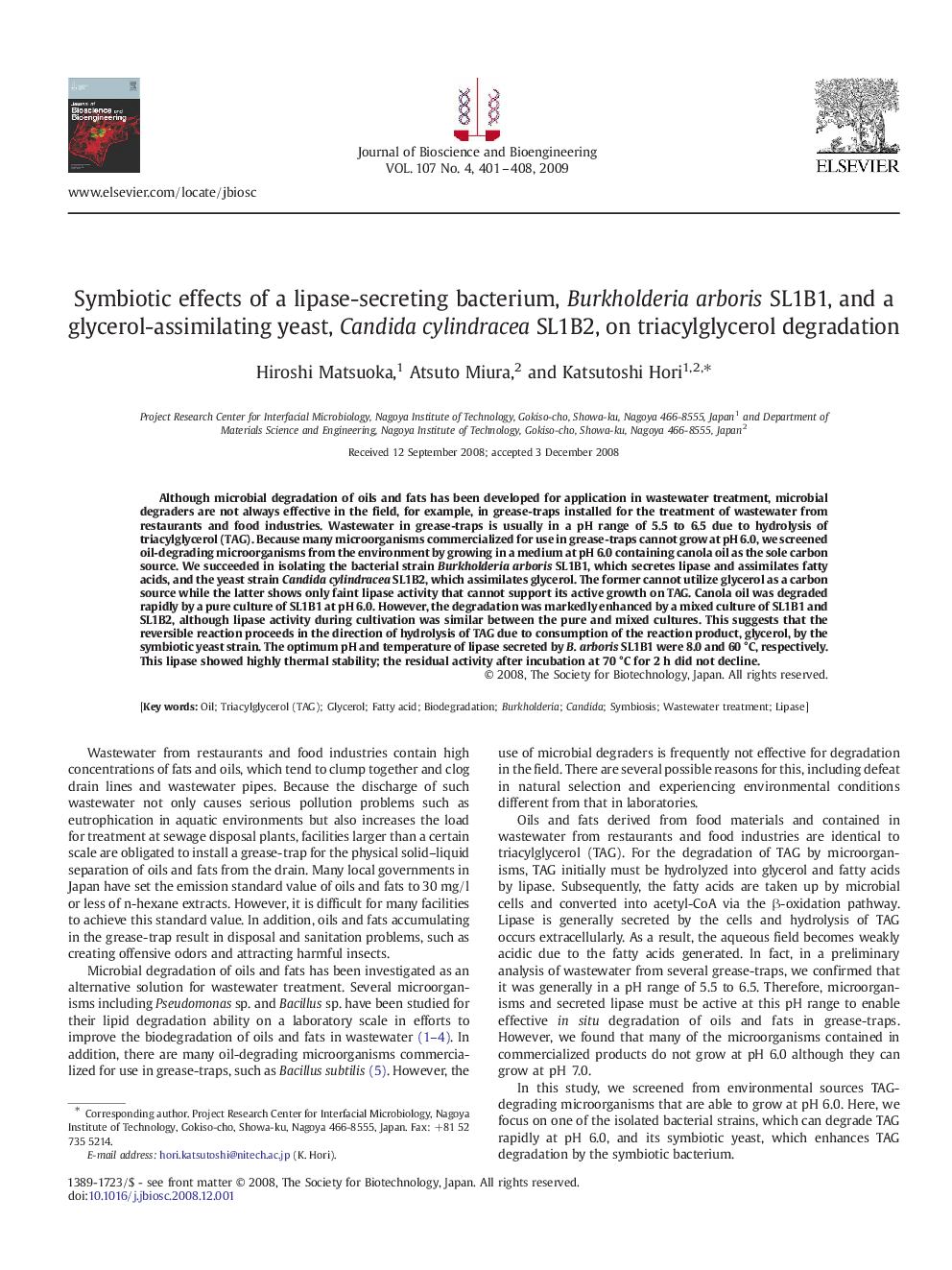| کد مقاله | کد نشریه | سال انتشار | مقاله انگلیسی | نسخه تمام متن |
|---|---|---|---|---|
| 21332 | 43217 | 2009 | 8 صفحه PDF | دانلود رایگان |

Although microbial degradation of oils and fats has been developed for application in wastewater treatment, microbial degraders are not always effective in the field, for example, in grease-traps installed for the treatment of wastewater from restaurants and food industries. Wastewater in grease-traps is usually in a pH range of 5.5 to 6.5 due to hydrolysis of triacylglycerol (TAG). Because many microorganisms commercialized for use in grease-traps cannot grow at pH 6.0, we screened oil-degrading microorganisms from the environment by growing in a medium at pH 6.0 containing canola oil as the sole carbon source. We succeeded in isolating the bacterial strain Burkholderia arboris SL1B1, which secretes lipase and assimilates fatty acids, and the yeast strain Candida cylindracea SL1B2, which assimilates glycerol. The former cannot utilize glycerol as a carbon source while the latter shows only faint lipase activity that cannot support its active growth on TAG. Canola oil was degraded rapidly by a pure culture of SL1B1 at pH 6.0. However, the degradation was markedly enhanced by a mixed culture of SL1B1 and SL1B2, although lipase activity during cultivation was similar between the pure and mixed cultures. This suggests that the reversible reaction proceeds in the direction of hydrolysis of TAG due to consumption of the reaction product, glycerol, by the symbiotic yeast strain. The optimum pH and temperature of lipase secreted by B. arboris SL1B1 were 8.0 and 60 °C, respectively. This lipase showed highly thermal stability; the residual activity after incubation at 70 °C for 2 h did not decline.
Journal: Journal of Bioscience and Bioengineering - Volume 107, Issue 4, April 2009, Pages 401–408